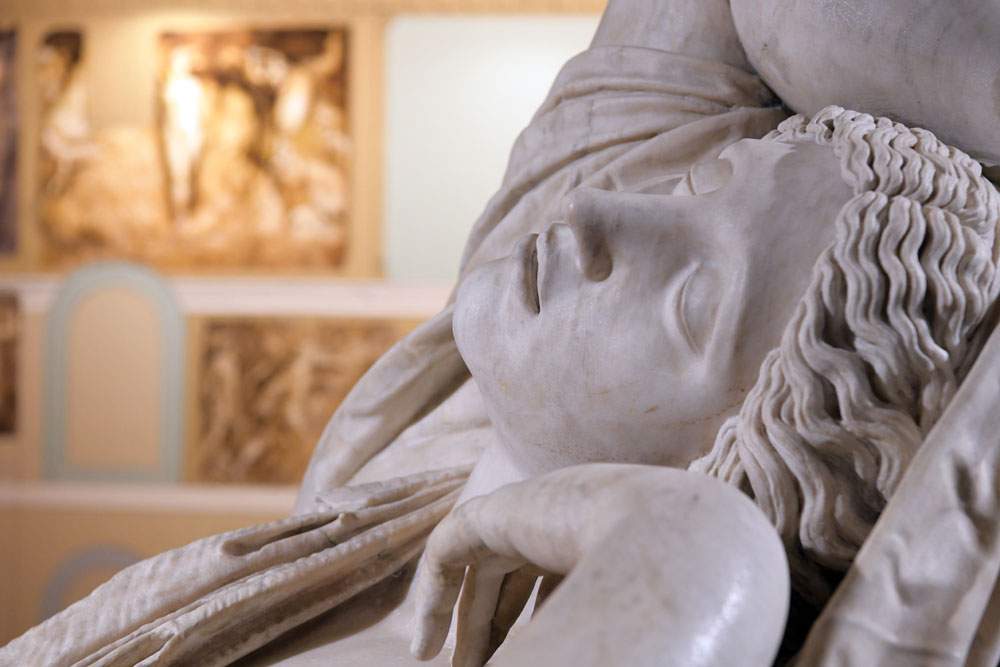Until September 30, 2021, the Civic Museums of Palazzo Pianetti in Jesi are hosting the exhibition Raphael and Angelo Colocci. Beauty and Science in the Construction of the Myth of Ancient Rome.
Among the most significant works is the sculpture of the Sleeping Nymph, also called Cleopatra because of its resemblance to the similar sculpture in the Vatican Belvedere. The statue dates from the second century AD, but was probably found in Rome in the late 15th century, without the head; the latter was later inserted when the sculpture was placed in the Roman humanistic Colocci/Del Bufalo garden, between 1513 and 1521-22. It is very plausible that Colocci himself commissioned it: it is the one that is preserved in the Uffizi, from which it is on loan.
Colocci’s garden in Rome had a grotto with an epigrammatic inscription dedicated to a sleeping nymph; since poetic declamations were held in the garden, the Nymph represented the state of poetic ecstasy, emphasized by the statue’s expression and blissful abandon. Following Colocci’s demise, the sculpture was sold and placed in Villa Medici in Rome until the eighteenth century, when many of the Medici collections were transferred to Florence.
The Nymph underwent a new modification: the head commissioned by Colocci was replaced with another, more melodramatic one, in line with the Baroque and theatrical taste of the time. If the Colocci head highlights the state of sleep, linked topoetic ecstasy, the other was intended to be inspired by the taste of its time, representing in the neoclassical age a sensibility that sought in the ancient world the opposition between Apollonian and Dionysian, between the peace and serenity of the classical and the pathos of tragedy.
In the nineteenth century, in 1883, Colocci’s head was found in Florence by the director of the Archaeological Museum, Adriano Milani, and was relocated in place of the eighteenth-century one. Finally in the 1920s - 1930s Aby Warburg collected a repertoire of ancient images, the pathosformeln, or images that were characterized by a strong emotional character, and placed this figure there as well. It was in fact an image representing a figure capable of surviving from antiquity to the popular myth of the Sleeping Beauty that inspired Charles Perrault, the Brothers Grimm and later Walt Disney.
The exhibition is organized by the Municipality of Jesi and is produced in collaboration with the Vativani Museums, the Marche Polytechnic University and with the support of the National Committee for the Celebration of the 500th Anniversary of Raphael’s Death, the Marche Region and the Cariverona Foundation.
For more info: www.raffaelloecolocci.it
 |
| On display in Jesi is the Uffizi's Sleeping Nymph, an ancient Roman sculpture with a troubled history |
Warning: the translation into English of the original Italian article was created using automatic tools. We undertake to review all articles, but we do not guarantee the total absence of inaccuracies in the translation due to the program. You can find the original by clicking on the ITA button. If you find any mistake,please contact us.